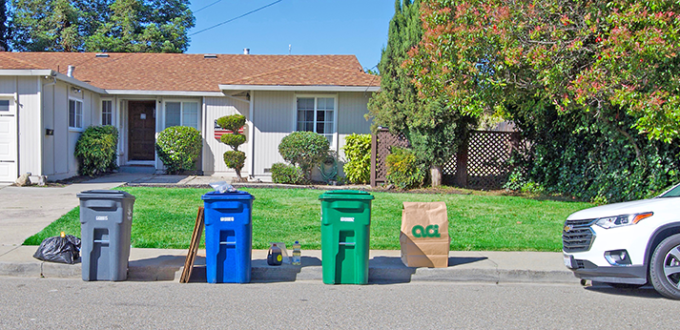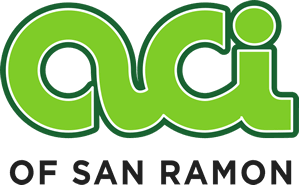
San Ramon
The Importance of Proper Sorting
California regulations and strict import policies have impacted recycling markets worldwide. Contamination levels in the recycling and organics streams result in higher costs to collect and process materials and a decrease in marketability of the end product. Proper sorting does make a difference! Using the correct carts and/or bins to sort your waste results in:
- compliance with California regulations.
- better quality and marketability of materials.
- a reduction in the amount of material going to the landfill.
- a reduction in greenhouse gas emissions.
Information on legislation related to solid waste in California is available online on the CalRecycle website.
A Timeline of Regulations* and Import Policies that affect California Waste and Recycling
1989 – AB 939 established the California Integrated Waste Management Act which required each city or county plan to include an implementation schedule which shows a diversion of 25 percent of all solid waste from landfills by January 1, 1995; and, diversion of 50 percent of all solid waste by January 1, 2000. Diversion was to be accomplished through source reduction, recycling, and composting activities.
January 2012 – AB 341 was signed and established a new statewide goal of 75 percent recycling through source reduction, recycling, and composting by 2020.
October 2014 – Governor Brown signs AB 1826, requiring that on and after January 1, 2016, local jurisdictions across the state implement an organic waste recycling program to divert organic waste (organics) generated by businesses (including multifamily residential dwellings that consist of five or more units) based upon the amount of waste they produce. Beginning January 1, 2019 – organics recycling is required for businesses that have 4 cubic yards or more of solid waste (garbage and recycling) service per week.
September 2016 – Governor Brown signed SB 1383, establishing targets to achieve a 50 percent reduction in the level of the statewide disposal of organic waste from the 2014 level by 2020 and a 75 percent reduction by 2025. An additional target of SB 1383 is that 20 percent of currently disposed edible food is recovered for human consumption by 2025.
July 2017 – China announces “National Sword,” a change in its import policies that has a profound impact on recycling efforts in California. Strict new contaminant thresholds went into effect January 2018 and have been applied to certain grades of paper and import bans on mixed paper and various grades of post-consumer plastics, resulting in very limited markets for mixed paper and various plastic containers. (In 2017, the U.S. sent more than 200,000 tons of mixed paper and about 75,000 tons of scrap plastics to China.**)
The cleanest and most efficient sorting starts with you, the generator.
- Please remember to place recyclable materials only in your blue recyclables carts and/or bins.
- Make sure all recyclable plastic, metal and glass food containers are empty and clean to prevent contamination.
- Remember, Garbage, Organics and Hazardous Waste, such as household batteries and lightbulbs, DO NOT belong in any Recycling container! For a list of what belongs in each cart and common contaminants, click here.
When in Doubt, Find Out!
If you have any questions regarding your collection services, please contact us.
Together we can all make a difference. We thank you for your efforts!
SOURCES:
* https://www.calrecycle.ca.gov
** https://www.waste360.com “China’s Changing Import Regulations—What Does It All Mean?”
http://www.crrcnorth.org/CrisisMediaKit.aspx
